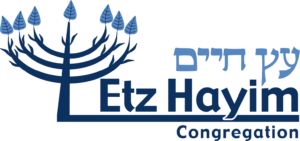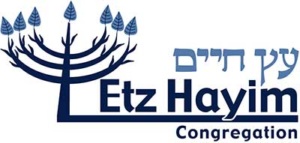Instructions for counting the omer are found on our Omer Overview Page. You can find the specific blessing for today at chabad.org.
We’re dedicating new Siddurim on the first day of Shavuot. In honor of this wonderful occasion, we’re using the counting of the Omer to learn about the siddur.
Enjoy today’s siddur related question and answer, which was provided by Andrew L..
Why are there different types of Kaddish, and what are they?
The Mourners’ Kaddish is only one of a total of five types of Kaddish:
1. The Hatzi Kaddish (Half Kaddish) is the shortest and it is used to delineate breaks between different parts of the same service (e.g., within the morning service). It consists of two brief paragraphs. The first one asks for God’s power and sovereignty to be accepted throughout the world during our lifetime; the second glorifies and praises God.
2. The Kaddish Shalem (Full Kaddish) is recited at the end of each service (e.g., at the end of the morning service). In addition to the two above paragraphs, it adds a sentence (Titkabal) asking for our prayers to be accepted, a second sentence (Ye Shelama) asking for life’s blessings for all of us, and a concluding sentence (Oseh Shalom) asking for peace across the universe and to all people.
3. The Kaddish Yatom (Mourners’ Kaddish) is the same as the Kaddish Shalem (Full Kaddish) but without the Titkabel sentence. It is recited at an appointed place in each service.
4. The Kaddish de Rabbanan (Rabbis’ Kaddish) is also recited by mourners, but everybody can join in. It is recited at the end of a teaching from the Rabbis of the Talmud, which is interspersed as a short text within the service. It is essentially the same as the Kaddish Shalem (Full Kaddish) but with the Titkabal sentence removed and replaced by a paragraph (Al Israel) that asks for blessings, sustenance, length of life, peace, and protection from danger for our rabbis, teachers, their disciples, and all who study our Holy Scriptures.
5. Lastly, there is the Kaddish de It’hadeta, which is recited only infrequently, specifically at a funeral and at the completion of a book of the Talmud (called Tractate) or of the Mishnah (called Order). It includes a sentence about the renewal of the world and the revival of the dead.
It is very interesting to note the differences between the Ashkenazi and the Sephardi versions of the Kaddish, and also to enquire about the reasons for these. The major differences are two:
1. The second line of the Kaddish can be translated as: “In the world which [God] has created according to [God’s] will, may [God] establish [God’s] kingdom.” Sephardim add the following at the end of this sentence: “and may [God] bring forth [God’s] redemption and may [God] hasten the coming of the Messiah.” So, why do Sephardim ask for the coming of the Messiah at this point, but Ashkenazim do not? I do not know.
2. The “Ye Shelama” section (which is in the Full Kaddish, the Mourners’ Kaddish, and the Rabbi’s Kaddish) is very brief and concise in the Ashkenazi version: “May there be abundant peace from Heaven and life’s goodness for us and for all Israel, and let us say Amen.” The Sephardi version is far longer and much more specific in its many requests: “May there be abundant peace from Heaven, life and satisfaction, salvation and consolation, help, healing and redemption, forgiveness, atonement, relief and deliverance, for us and all the people Israel, and let us say Amen.” So, why are Ashkenazim so much more modest in these personal requests than Sephardim? I do not know.
An obvious generic answer to both questions may be the perennial “Tradition!”, but it might be interesting to speculate on additional or more specific reasons. There are also some smaller differences between the Ashkenazi and Sephardi texts of the Kaddish, but these two are the major and most interesting ones.


